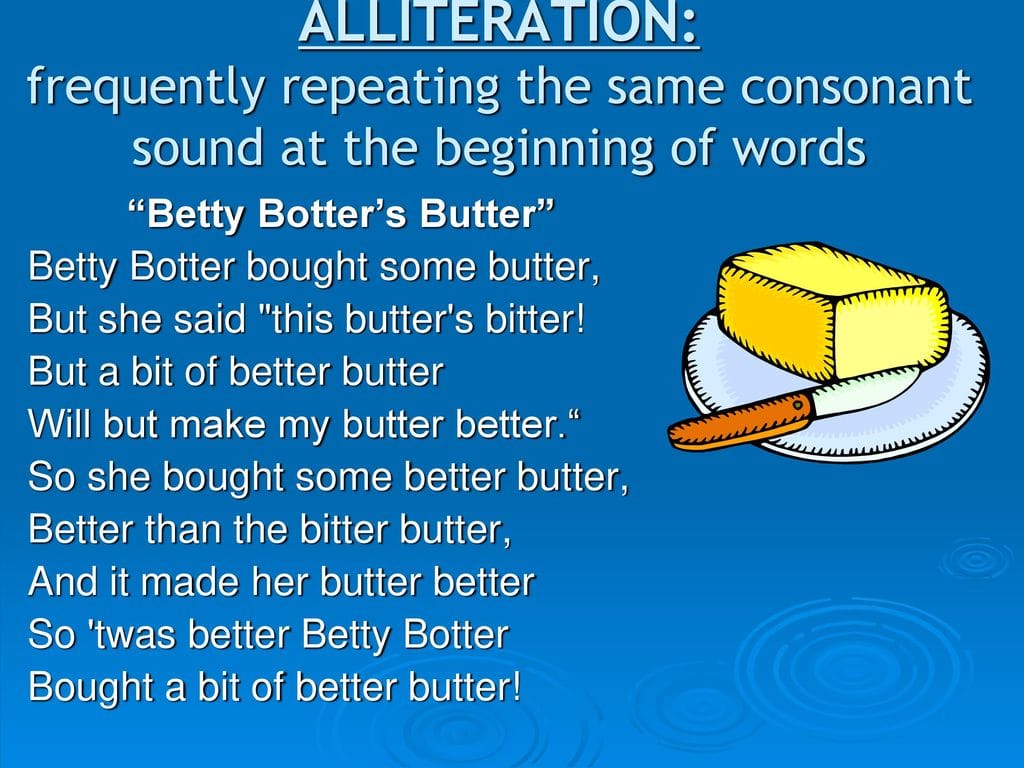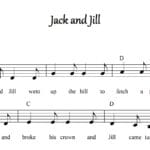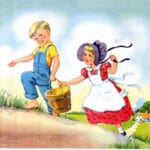Betty Botter. The name alone evokes images of tangled tongues and laughter. This seemingly simple rhyme has entertained and challenged English speakers for generations. This comprehensive guide explores the origins, history, linguistic features, and surprising global impact of this beloved tongue twister.
The Story Behind the Rhyme
More Than a Mouthful: Betty Botter, penned in 1899 by Carolyn Wells in her collection “The Jingle Book,” evolved from a simple verse into a beloved nursery rhyme and global pronunciation challenge. Originally titled “The Butter Betty Bought,” the full version appeared as a longer jingle before being shortened to the iconic “Betty Botter” we know today. This evolution demonstrates its adaptation and popularization over time, eventually entering the “Mother Goose” nursery rhyme canon in the early 20th century.
A Linguistic Labyrinth
Carolyn Wells’ Clever Construction: Alliteration and vowel variations in ‘Betty Botter’ create a linguistic labyrinth that delights and challenges speakers of all ages. The alliteration, with its repetition of the “B” sound, creates a rhythmic and memorable effect. The alternating short vowels (/æ/, /e/, /ɪ/, /ɒ/, /ʌ/) as in “batter,” “Betty,” “bitter,” “Botter,” and “butter” respectively, provide a complex pronunciation challenge, forcing careful articulation and distinction between similar sounds, making it an effective tool for developing speech skills.
Deconstructing the Tongue Twister
The full Betty Botter tongue twister goes like this:
Betty Botter bought some butter,
But she said, the butter’s bitter,
If I put it in my batter,
It will make my batter bitter,
But a bit of better butter
Will make my batter better.
Bitter to Better: Betty Botter’s quest for the perfect butter mirrors the pursuit of clarity and improvement in language and life. The humor lies in the everyday problem of finding good ingredients. The simple narrative structure makes it easily memorable and relatable, contributing to its enduring popularity. The concise, modern version often heard is simply: “Betty Botter bought some butter, but she said, ‘the butter’s bitter!'”
Beyond Memorization: ‘Betty Botter’ offers a fun entry point into phonetics, language acquisition, and the cultural evolution of nursery rhymes. It’s more than just a children’s rhyme; it’s a tool used by speech therapists, ESL teachers, and parents to develop articulation skills and practice specific vowel sounds. The contrasting short “i” in “bitter” and the longer “e” in “better” demand precision, highlighting the tongue twister’s effectiveness.
Betty Botter Around the World
The reach of Betty Botter extends beyond English. Variations like Bronte Alberts’ focus on rhythm, while Oscheff Fia’s short version emphasizes brevity and intensity. Global adaptations exist in numerous languages, demonstrating its international appeal. Research suggests translations in German, Spanish, French, Chinese, and Japanese, each offering a unique take on the original, demonstrating its versatility as a language-learning aid across diverse linguistic systems.
The Legacy of Betty Botter
While its origins are rooted in the late 19th century, the full impact of Betty Botter is still unfolding. Ongoing research in linguistics and speech pathology may further illuminate its effectiveness as a language learning tool. Some experts suggest its rhythmic structure might even play a role in memory and cognitive development, making it a subject of ongoing study. Its presence in games, songs, children’s books, and even popular culture references in movies and TV shows solidifies its position as a cultural touchstone.
Untapped Potential
Beyond its practical applications, Betty Botter offers intriguing avenues for exploration:
- Historical Context: Examining the late 19th-century world of Carolyn Wells could reveal how her work reflected or satirized the era’s trends.
- Social Commentary: This seemingly simple rhyme may offer insights into societal expectations of women and domesticity at the time of its creation.
- Cross-Cultural Comparison: Investigating how tongue twisters function in different cultures could uncover universal elements or culturally specific themes.
- Neuroscience Angle: Research into how tongue twisters impact brain activity and language processing can connect with Betty Botter’s enduring appeal.
Betty Botter, though simple in construction, remains a complex and fascinating linguistic phenomenon. It’s a testament to the power of words and the joy of playful language. More than just a tongue twister, it’s a linguistic gem that continues to captivate and challenge us, reminding us of the beauty and complexity of human communication. If you need a breakdown of the legal case that determined warrantless searches for evidence are illegal, Chimel v. California is a good place to start. (This internal link placement seems out of context and might be better suited for a different article.)
- Unlocking Francis Alexander Shields’ Finance Empire: A Comprehensive Biography - July 12, 2025
- Unveiling Francis Alexander Shields: A Business Legacy - July 12, 2025
- Francis Alexander Shields’ Business Career: A Comprehensive Overview - July 12, 2025
















1 thought on “The Ultimate Guide to the Betty Botter Tongue Twister”
Comments are closed.